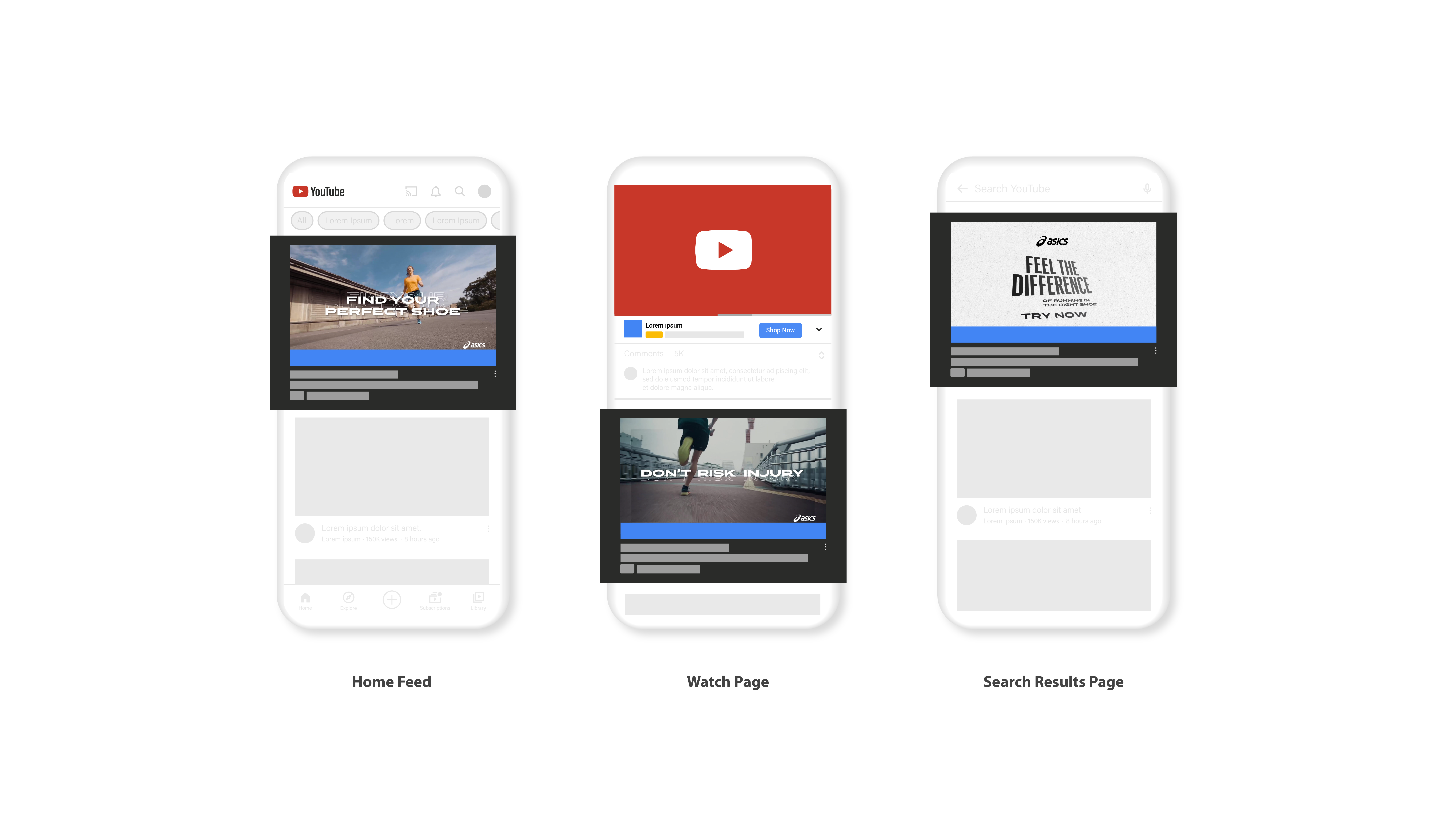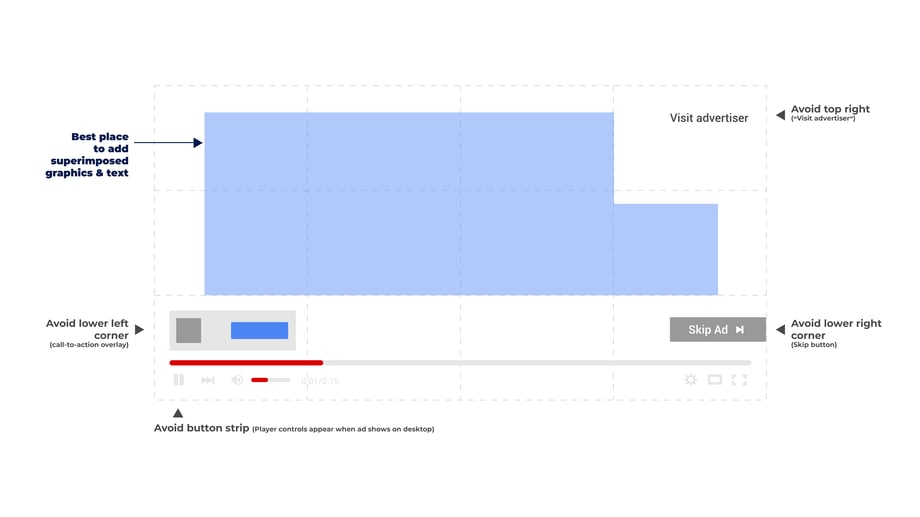Introduction To YouTube Ads
With over 2 billion monthly users, YouTube is the world’s leading video platform, and second largest search engine.
Over the past decade, YouTube has come to play an increasingly important role within people’s day-to-day lives. Evolving from its mid-2000’s viral video sharing focus, YouTube is now one of the leading players in the world of entertainment. For this reason, advertising on YouTube has become a key channel for brands wishing to reach a vast audience and drive campaign objectives.
YouTube now offers a wide range of ad formats and solutions that are geared to achieve a variety of different business goals. From boosting brand awareness to driving e-commerce conversions—whatever the objective, there is sure to be a YouTube ad format that can help you to achieve it.
This article takes you through each of these different formats, explaining how they function and which outcomes they can enable. In this article you will also learn some creative best practices that will help you optimize your YouTube creative assets.
YouTube Ad Formats
What is TrueView?
If you’re new to advertising on YouTube, you are going to commonly come across the term “TrueView”. So, let’s first explain what TrueView is before breaking down the different formats that fall under this category.
TrueView itself is not an ad format per se, rather, it is a way of advertising on YouTube where you as an advertiser are only charged when viewers of the ad have performed a specific action.
- For TrueView In-Stream ads (excluding Reach campaigns), you will be charged on a cost-per-view (CPV) model where a view is counted when the audience watches 30-seconds of your video (or the entire duration if your video is less than 30-seconds) or when they interact with a clickable element within the ad such as a CTA button or companion banner. With TrueView For Reach campaigns, you will be charged on using an efficient CPM structure which will enable you to reach a high number of viewers.
- For TrueView Discovery ads, you will be charged when audiences choose to watch your video by clicking the thumbnail that appears within their mobile homepage, search results, or next to videos they are watching.
Essentially, you can think of TrueView as a way of getting the most out of your ad budget, as you will only be paying when audiences choose to watch or interact with your ad.
1. TrueView In-Stream
TrueView In-Stream formats enable you to connect with audiences whilst they are engaging with their favorite video content. In-Stream video ads will appear before, during, or after YouTube partner videos.
The standard TrueView In-Stream format should be between 12-30 seconds in duration, and are able to be skipped after the 5-second mark with a Skip-Ad button appearing on the bottom right hand corner. This standard format can be understood as the bread and butter of YouTube advertising, and is mostly used for upper-funnel objectives.
However, under the ‘TrueView In-Stream’ umbrella, there are a number of other formats available to advertisers. Each function in different ways in order to help advertisers achieve their specific objectives.
Let’s now take a look at some of these other TrueView In-Stream ad formats.
Video Action Ads
Video Action Campaigns is the go-to option for brands wishing to drive conversions on YouTube. Drawing from its predecessor TrueView For Action, Video Action Campaigns utilize a single piece of video creative—running it in a number of placements across YouTube and its partners. This helps you to scale your conversion-focused campaigns whilst also using Google machine learning to ensure that your ads are being shown to audiences who are most likely to take your desired action—whether that be clicking through to a purchase page, learning more about your product, or requesting a quote.
Depending on their placement, Video Action Campaigns will either use skippable in-stream or video discovery inventory.
Creative requirements: videos need to be a minimum of 15-seconds, and should be optimized for mobile, whilst also desktop-friendly.
The key creative consideration for Video Action Campaigns is designing your video around your CTA. In other words, your creative should use visual techniques to encourage audiences to take your desired action.
To learn more about Video Action Campaigns, and how to build effective, action-oriented ads, you can check out our webinar.
TrueView For Shopping
Source: Google
TrueView For Shopping is a solution specifically designed to help boost e-commerce conversions. The shoppable ad format technically now falls under Video Action Campaigns (with the ability to add product feeds), however, we thought it would be worth mentioning this format on its own due to the power it has for brands who are set up on Google Merchant Center.
As you can see from the example above, TrueView For Shopping Ads enable you to include a product feed including a minimum of four product images beneath your main video ad. This allows audiences who have been engaged by the initial creative to immediately purchase related products by clicking a product image and being directed towards its relevant landing page.
This type of format is highly beneficial for advertisers trying to achieve website conversions, with the addition of product feeds helping to achieve over 60% more conversions at a lower cost.
TrueView For Reach
If you’re looking to achieve top-of-funnel objectives, TrueView For Reach may be the ad format for you. As mentioned earlier, this format uses highly efficient CPM’s in order to place your ad in front of a vast audience.
Due to this brand awareness objective, the creative for this format needs to be treated differently to the two previously mentioned TrueView formats. Firstly, the ideal duration is 15-20 seconds, however, you can alternatively run 6-second creatives. Secondly, the creative itself rather than being centred around the CTA, should be focused on engaging the audience early, and holding their attention in order to communicate a strong brand message.
2. TrueView Discovery Ads

Whereas TrueView In-Stream formats appear embedded within video content, TrueView Discovery Ads (as the name suggests) appear at different points of discovery on the YouTube platform, such as search results and watch pages. Rather than viewing the video ad within the ad unit itself, a thumbnail will appear in a similar way to organic videos that link to a watch page where the video is played.
Discovery ads are powerful as they enable you to reach the right audience at the right time, in places where users are looking for inspiration. This means that the viewers you get from this format are already highly engaged. From a creative perspective, this allows you to utilize longer-form video in order to tell a richer, more complex story.
3. Bumper Ads
Moving on from the TrueView formats, we will now look at Bumper ads.
Bumpers are short (6-seconds or less) non-skippable video ads embedded in-stream within YouTube partner video content. Bumpers use CPM bidding, meaning that you pay every time the ad is shown 1,000 times.
A brand awareness focused format, Bumpers are bite-sized ads perfect for engaging on-the-go, mobile audiences. Due to their bite-sized characteristic, the creative for Bumpers needs to be simple, yet punchy. You should focus on one key message, and drive it home with bold visuals that leave a lasting impression on the viewer.
Bumper ads are also a great way to supplement your TrueView campaigns. By combining the two, your campaign will be bolstered and more far-reaching. If you have developed TrueView creative, you can often condense the visuals messaging into a shorter 6-second bumper that maintains a consistent look and feel.
4. Outstream Video Ads
Outstream ads are mobile-only video ads that appear on partner sites or apps outside of YouTube. This helps to increase reach by expanding your campaign outside of YouTube, making the format a suitable option for brand building objectives.
You are charged for Outstream video ads on viewable cost-per-thousand impressions (vCPM), meaning that you will only pay when at least 50% your ad is visible for two consecutive seconds.
5. YouTube Masthead
YouTube’s Masthead placement offers prime ad real estate for brands wishing to garner massive reach in a single day. Masthead ads occupy the top of the YouTube home-page on mobile, desktop, and connected TV (CTV) devices, making it an extremely high-impact placement giving your brand maximum visibility to a vast audience.
Note: As a premium ad format, YouTube Masthead is only available on a reservation basis through a Google sales representative.
YouTube Ads: Creative Fundamentals
1. Work within the safe zones

Depending on your YouTube ad format of choice, you are likely to encounter some kind of visual overlay when the ad is placed on the platform. The image above details what this looks like for a Video Action ad encountered on a desktop device.
When designing your creative you need to ensure that your key visual elements (logos, superimposed text, characters etc.) stay within the safe zone in order to avoid being blocked by overlaid elements such as skip buttons or CTAs.
2. Build for sound-on
Whilst visuals are key to your YouTube ads, it is also crucial to ensure that you are using sound to its fullest effect. 95% of YouTube ads are watched with sound enabled which means there is an opportunity to strengthen the message of your ad through sound.
Consider the different ways in which sound can help your ad to achieve its campaign objective. This may call for voice-over if you want to announce a special offer or describe your product’s characteristics and benefits. It may also be a good idea to utilize some impactful sound effects within the first few seconds of your ad to grab and hold viewers attention.
3. Understand where you ads are being seen
Over 70% of YouTube watch-time occurs on mobile devices, making it crucial to optimize your ad creative for mobile viewing experiences. To do so, utilize tight framing, large superimposed text, and ensure that you make the first few seconds of your ad count with an engaging hook.
YouTube advertisers should also consider utilizing vertical video ads in order to diversify their creatives whilst delivering more impact for audiences watching in portrait mode.
As mentioned in the sections above, some of YouTube’s ad formats are either mobile specific, or work better on mobile. So if choosing these formats, a mobile-first design approach becomes even more important.
However, as we know, YouTube is viewed across a wide range of devices. Connected TV (CTV) for example is a growing area for YouTube with over 100 million people per month watching YouTube on a TV screen in the U.S alone. This has led to the creation of YouTube Select which can enable CTV-specific media buys, and the announcement of interactive YouTube ads for TVs which will help to drive conversions with TV audiences.
If CTV inventory is a focus, this will need to be reflected in terms of how your creative is designed from a framing and narrative perspective.
Getting started with YouTube Advertising
Hopefully this article has provided you with a solid overview of the different YouTube ad formats, how they function, and what business objectives that they can help you achieve.
As a YouTube Creative Partner, we here at Shuttlerock would be more than happy to help you to explore YouTube advertising further and look at which solutions may be the best fit for your brand. If you’d like to get in touch, you can visit our Contact page.











.png?width=159&height=159&name=Group%201000001080%20(1).png)

